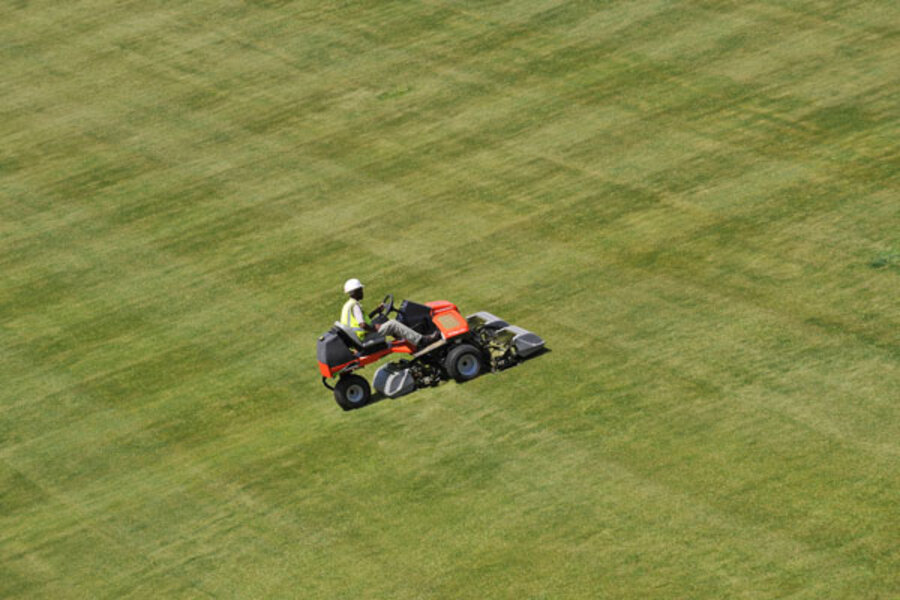Lawns may contribute to global warming
Loading...
It's the sort of headline that would grab the attention of any city dweller: Urban 'Green' Spaces May Contribute to Global Warming. As it turns out, "green spaces" doesn't mean pocket parks or wooded areas. It refers to grass. Grass in parks and grass covering athletic fields.
And, although the study – from the University of California Irvine – looked at grass in parks, the conclusions may give pause to lawn-proud homeowners, too:
Why?
It's not so much the grass -- which does remove CO2 from the air and store carbon in the soil -- but the care that the lawn needs: applying fertilizer, mowing, irrigation, leaf blowing, etc., all of which produce emissions (four times greater than the amount of carbon stored). Editor's note: Please note at the end of this post that this data is being disputed.
The two athletic fields looked at by the researchers produced even worse results than grass (which hort. and ag, scientists always refer to as "turfgrass") in picnic areas.
Soccer and baseball fields get such hard use that they're often aerated and replanted: Due "to soil disruption by tilling and resodding – they didn’t trap nearly as much carbon as ornamental grass [the grass in picnic areas] but required the same emissions-producing care," the university says.
Previous research demonstrated the carbon-storing ability of lawns, but didn't compare that to the emissions that result from grooming and other care.
All this matters because grass currently covers almost 2 percent of the land in the continental United States.
Editor's Note: On Feb. 15, we received this notice from the Outdoor Power Equipment Institute, which is excerpted:
The Outdoor Power Equipment Institute today announced that Dr. Amy Townsend-Small of University of California – Irvine (UC – Irvine) acknowledged a computation error of carbon used to maintain turf in the recently released UC-Irvine study published January 19, 2010, titled “Carbon Sequestration and Greenhouse Gas Emissions in Urban Turf.” With the error corrected, ornamental grass is in fact shown to be a net sequester of carbon even when inputs are accounted for in grass maintenance. The correction has been submitted to the American Geophysical Union (AGU) who published the paper.
Upon review of the report, various flaws were discovered, including one significant math error that was made in computing the carbon consumed during mowing. The carbon from fuel consumption was multiplied by 12, one too many times, to convert from monthly to annual data. The error was not caught during the peer review process prior to publication of the paper by the AGU. When the computation is corrected, turfgrass actually is a net sequesterer of carbon dioxide, reversing the conclusions of the original report that was widely reported in the media.
“Blaming grass for contributing to global warming is a non-starter when you look at the facts. The grass in your backyard is working hard to keep us cool, soak up carbon, capture particulates, produce oxygen, capture rain water and reduce run-off. We need to focus on the right plant in the right place and on management practices that maximize the environmental benefits potential of turfgrass,” said Kris Kiser, Executive Vice President of OPEI.
Kiser added that, “While the UC-Irvine study, rightly so, highlights that mismanagement of turfgrass can occur via excessive fertilization and irrigation, and inefficient maintenance practices, the focus should be on proper management techniques.” OPEI stressed that proper management techniques can minimize carbon emissions and maximize the benefits of carbon sequestration in turfgrass; for example, proper selection of turf based on climatic region (drought resistant species) and leaving grass clippings on the grass to serve as a natural nitrogen fertilizer.
OPEI also noted that the UC-Irvine study did not acknowledge the dramatic reductions of emissions and fuel use profile for today’s gasoline and diesel equipment, nor did the study disclose what model equipment and corresponding fuel use numbers were used.





